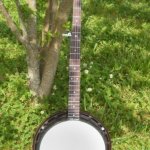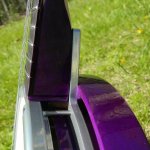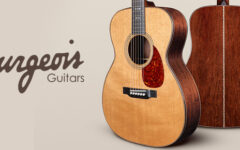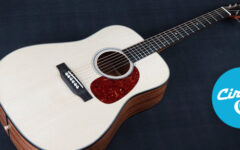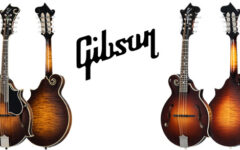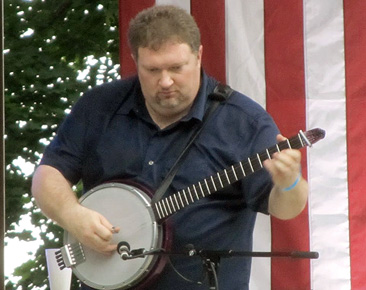
 Folks in south central Virginia have known Jody King for years, both as a first rate musician on banjo, mandolin, and guitar, and as an inveterate tinkerer, prone to experiment with instrument design, especially on the five string. He’s a fixture at local shows and jams, and always seems to have some new modification to his banjo.
Folks in south central Virginia have known Jody King for years, both as a first rate musician on banjo, mandolin, and guitar, and as an inveterate tinkerer, prone to experiment with instrument design, especially on the five string. He’s a fixture at local shows and jams, and always seems to have some new modification to his banjo.
Of course people all over the country know him as well as the banjo player with Larry Cordle & Lonesome Standard Time, a gig he has held for many years, on top of filling in with Johnny and Jeanette Williams and other regionally-based acts.
And now, after years of dissection and trial-and-error development, Jody is ready to officially announce the launch of his banjo company, the King Banjo.
But don’t be mistaken… This isn’t another Mastertone clone or a subtle adaptation on the 1930s designs that dominate modern banjo building. King has completely reworked the form and function of the five string banjo to create an instrument that is suitable for both bluegrass and old time playing, weighs a fraction of its traditional cousins, and using a neck that is simply fitted like a bolt-on neck guitar.
Jody’s new design has three primary components: a headless neck with tuners built into a custom tailpiece; a pot assembly with a custom flange and hoop – and a carbon fibre tone ring; and a resonator that is designed more like a guitar body.
Anyone who sees the neck will recognize the concept from guitars and basses built by Ned Steinberger in the 1980s. They were quite popular with rock and jazz musicians and the company was eventually sold to Gibson. Special double ball-end strings were used for these headless instruments.
 For the King Banjo, Jody has synthesized this system for a five string banjo, using either string locks where a headstock would normally be found, or a Steinberger-like attachment for use with double ball-end strings. The strings are fixed at the tailpiece where custom made fine tuners are used to adjust the pitch. There is no 5th string peg, and the fifth string runs along the entirety of the neck, which does not taper like more traditional banjos.
For the King Banjo, Jody has synthesized this system for a five string banjo, using either string locks where a headstock would normally be found, or a Steinberger-like attachment for use with double ball-end strings. The strings are fixed at the tailpiece where custom made fine tuners are used to adjust the pitch. There is no 5th string peg, and the fifth string runs along the entirety of the neck, which does not taper like more traditional banjos.
The pot assembly includes a flange and hoop of the same diameter, with only 14 brackets holding the two in place. These are made from powder coated aluminum, reducing the weight of the banjo considerably, with the flange extending beyond the pot to create a platform where the neck is bolted in place. Jody builds his rims from a block-type construction, and mounts a custom carbon fibre tone ring. A standard bell bronze ring can be substituted if prefered.
 Since the flange does not extend laterally from the pot, the King resonator can be made both narrower and less deep. They also have much thinner back and side walls, closer to the thickness of an acoustic guitar back and sides. It is made to quickly pop off, and the flange design allows for comfortable playing in this open back fashion.
Since the flange does not extend laterally from the pot, the King resonator can be made both narrower and less deep. They also have much thinner back and side walls, closer to the thickness of an acoustic guitar back and sides. It is made to quickly pop off, and the flange design allows for comfortable playing in this open back fashion.
Stainless steel frets are used in the fingerboard, so regular re-fretting is not a concern for pro players.
A former student of Jody’s, Joe Troop, has put together this in-depth video where he describes and demonstrates his King Banjo.
Joe has also created videos in Japanese and Spanish for anyone so inclined.
It seems likely that some pickers will be immediately turned off by the radical design, but for others who can embrace the concept, Jody is eager to talk with you about building a King Banjo. His contact information can be found online.
A version is also available using a traditional headstock and tuners, with one of Jody’s new pots.


